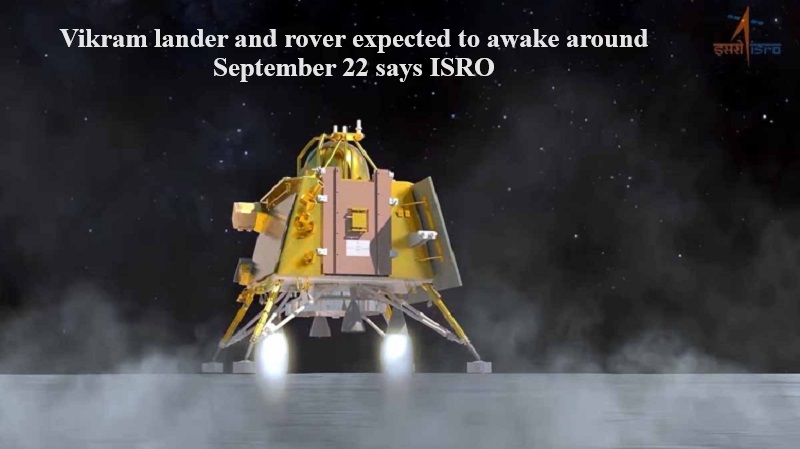
India’s lunar mission, Chandrayaan-3, achieved a successful touchdown on the Moon’s surface on August 23. Since then, the Vikram lander and Pragyan rover of Chandrayaan-3 have carried out extensive studies on the lunar surface, uncovering various findings.
All in-situ experiments on the lunar surface were conducted over a span of 14 Earth days. Following this phase, the Vikram lander and Pragyan rover were placed into sleep mode on September 4. The Indian Space Research Organisation (ISRO) anticipates that the lander and rover will reawaken around September 22.
The Pragyan rover was transitioned into sleep mode coinciding with the lunar sunset. ISRO noted that data from all the payloads was transmitted to Earth via the Vikram lander.
Chandrayaan-3’s battery is fully charged, and the solar panel is set to receive sunlight during the upcoming lunar sunrise, expected on September 22. While Vikram and Pragyan were designed for a lunar day’s lifespan (equivalent to 14 Earth days), there is still a possibility that they will reawaken at the next sunrise. However, if they do not rouse on September 22, they will remain on the lunar surface as permanent fixtures, serving as India’s lunar ambassadors, as stated by ISRO.
While the Vikram lander has remained stationary at its landing site, the Pragyan rover embarked on a journey shortly after landing, becoming the first vehicle to traverse the South Pole of the Moon.
The decision to place the Vikram lander in sleep mode on September 4 was primarily driven by the need to ensure its survival in the harsh lunar night environment. During the lunar night, which spans 14 days, the Moon plunges into profound darkness, and temperatures plummet to nearly -200 degrees Celsius. Under such extreme conditions, the chances of technical equipment’s survival are exceedingly slim.
In contrast, the Pragyan rover is equipped with radioisotope heater units (RHUs), which operate passively to radiate heat and maintain the hardware onboard the spacecraft at sustainable operating temperatures. These RHUs are integral components of space missions, utilizing heat generated from the natural decay of radioactive isotopes such as plutonium or polonium to produce electrical power.

Post Your Comments